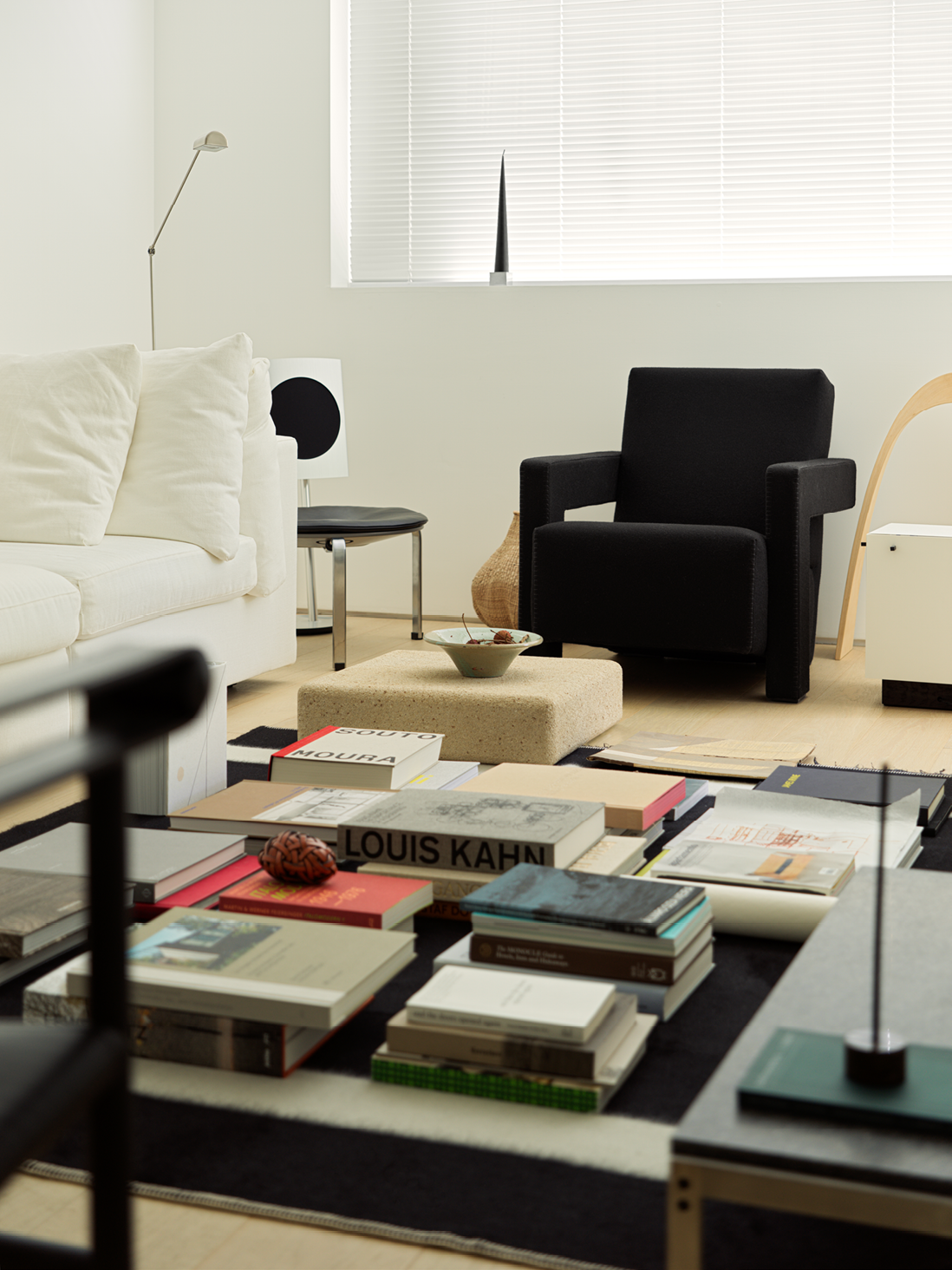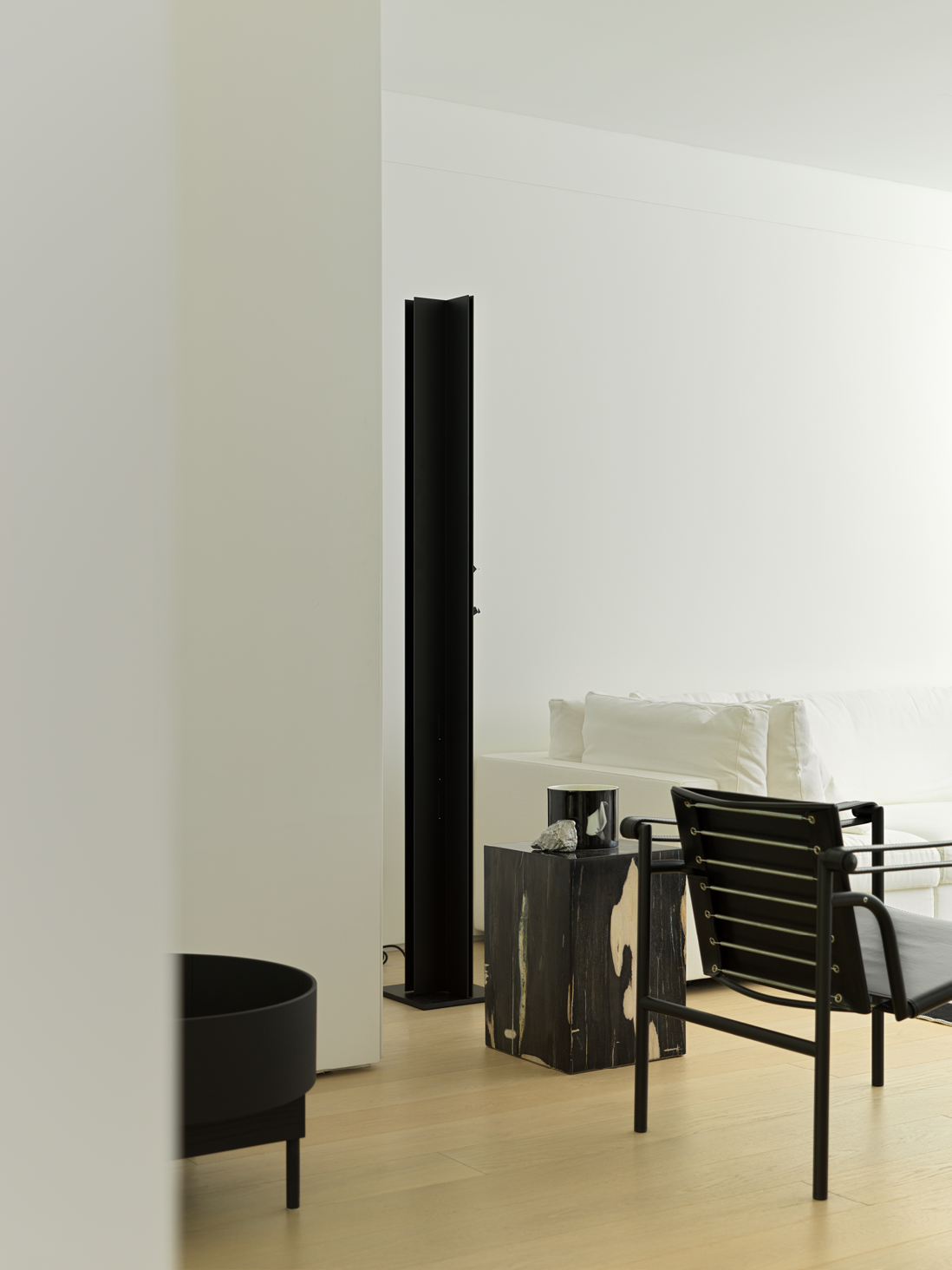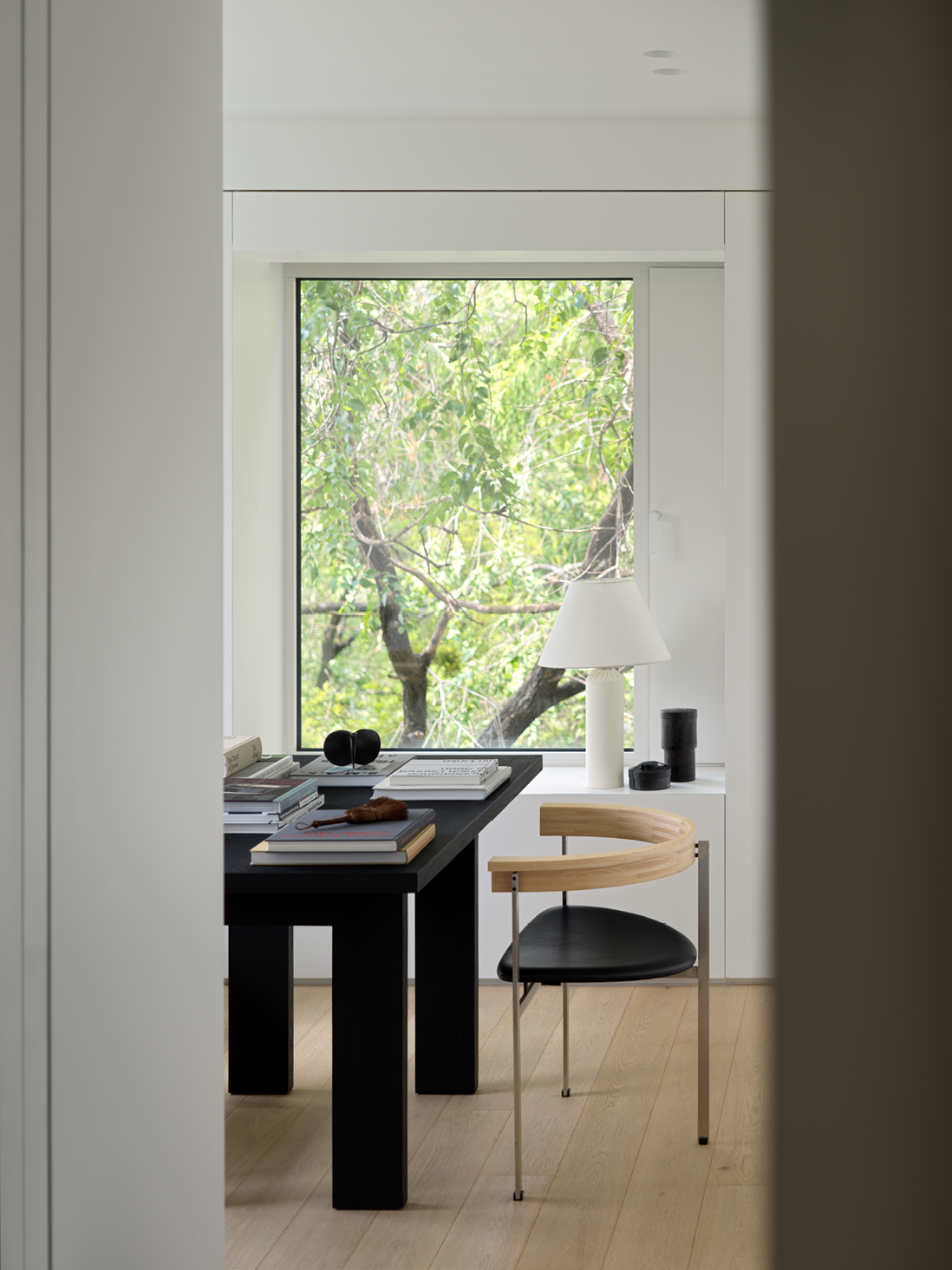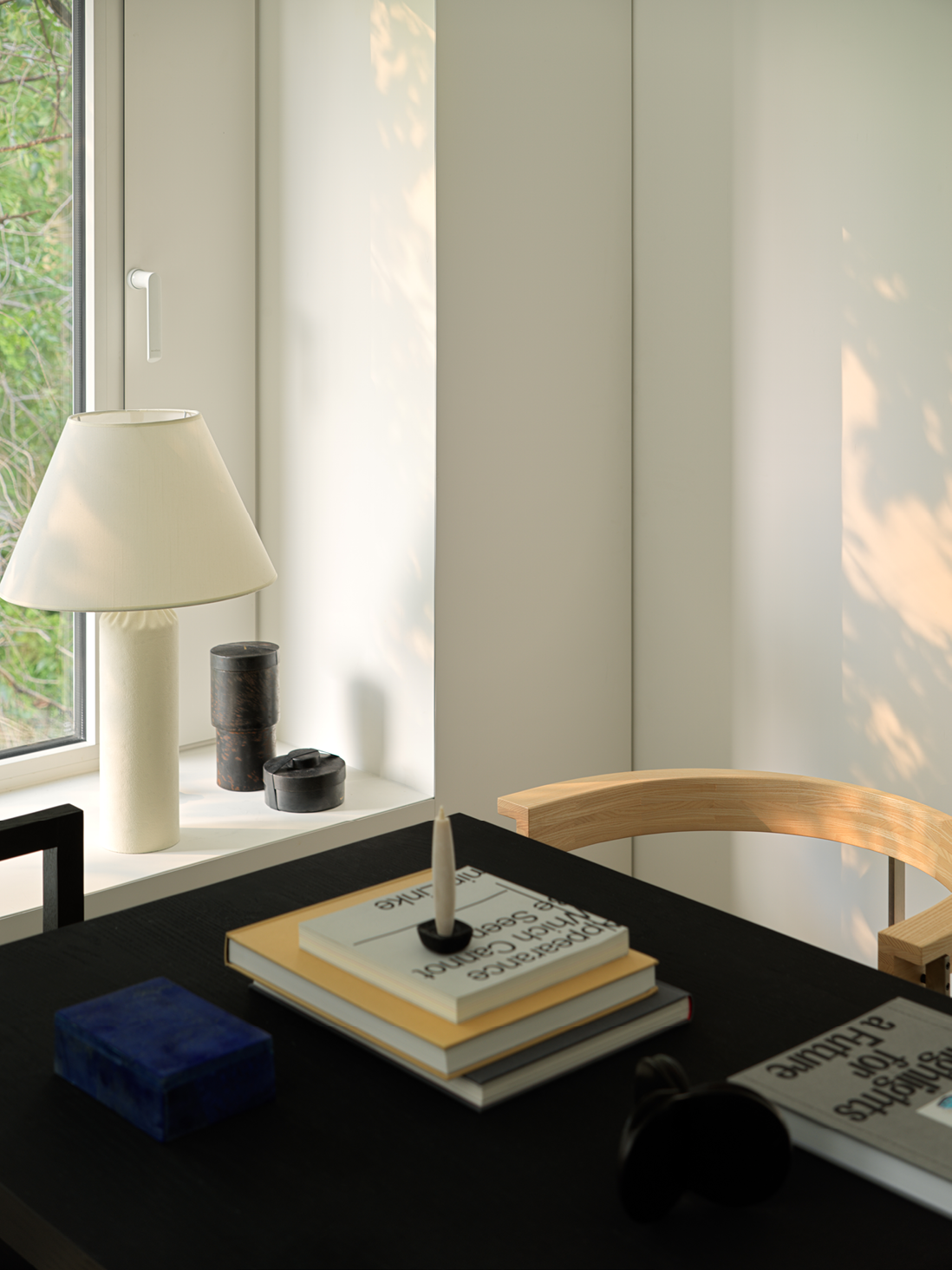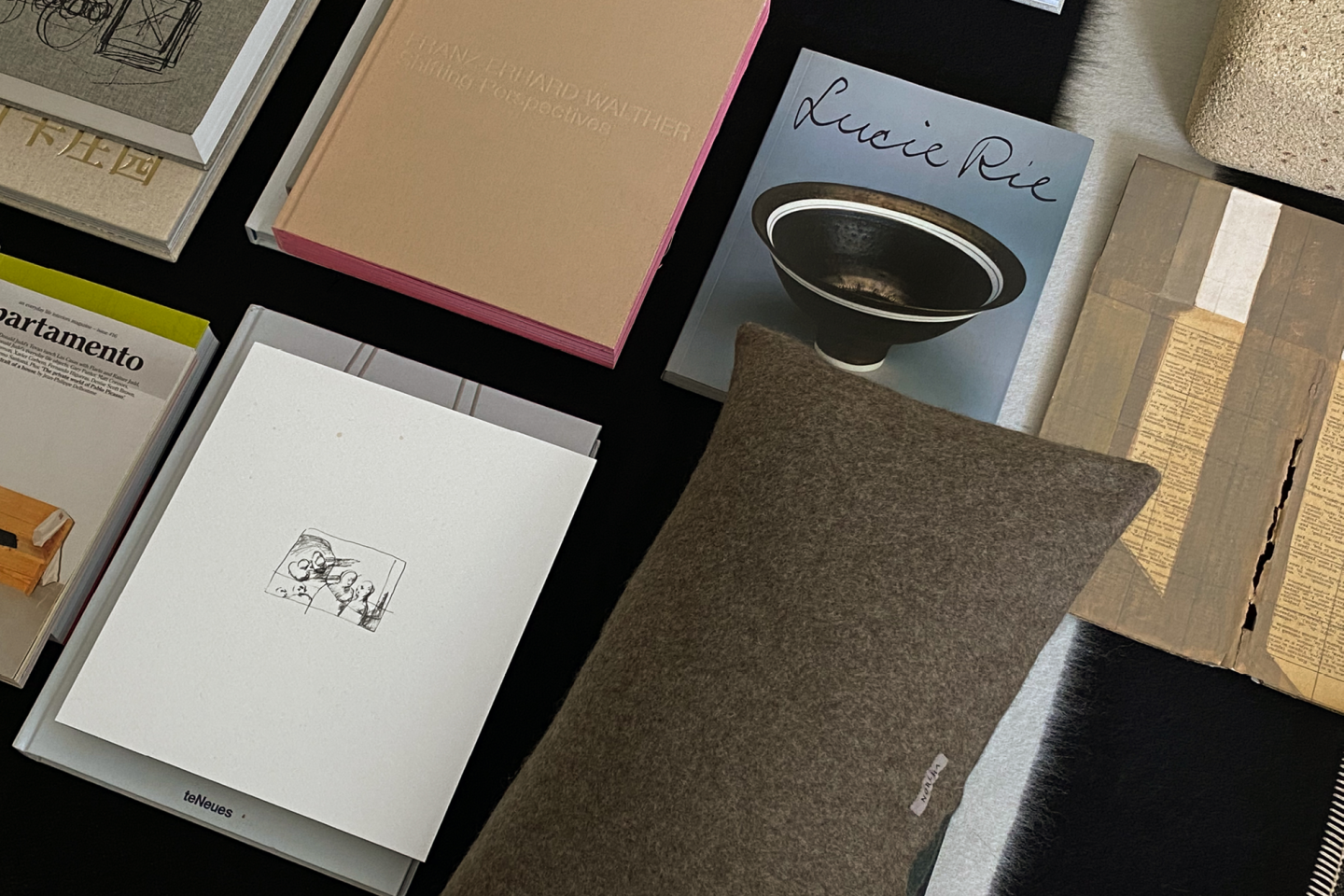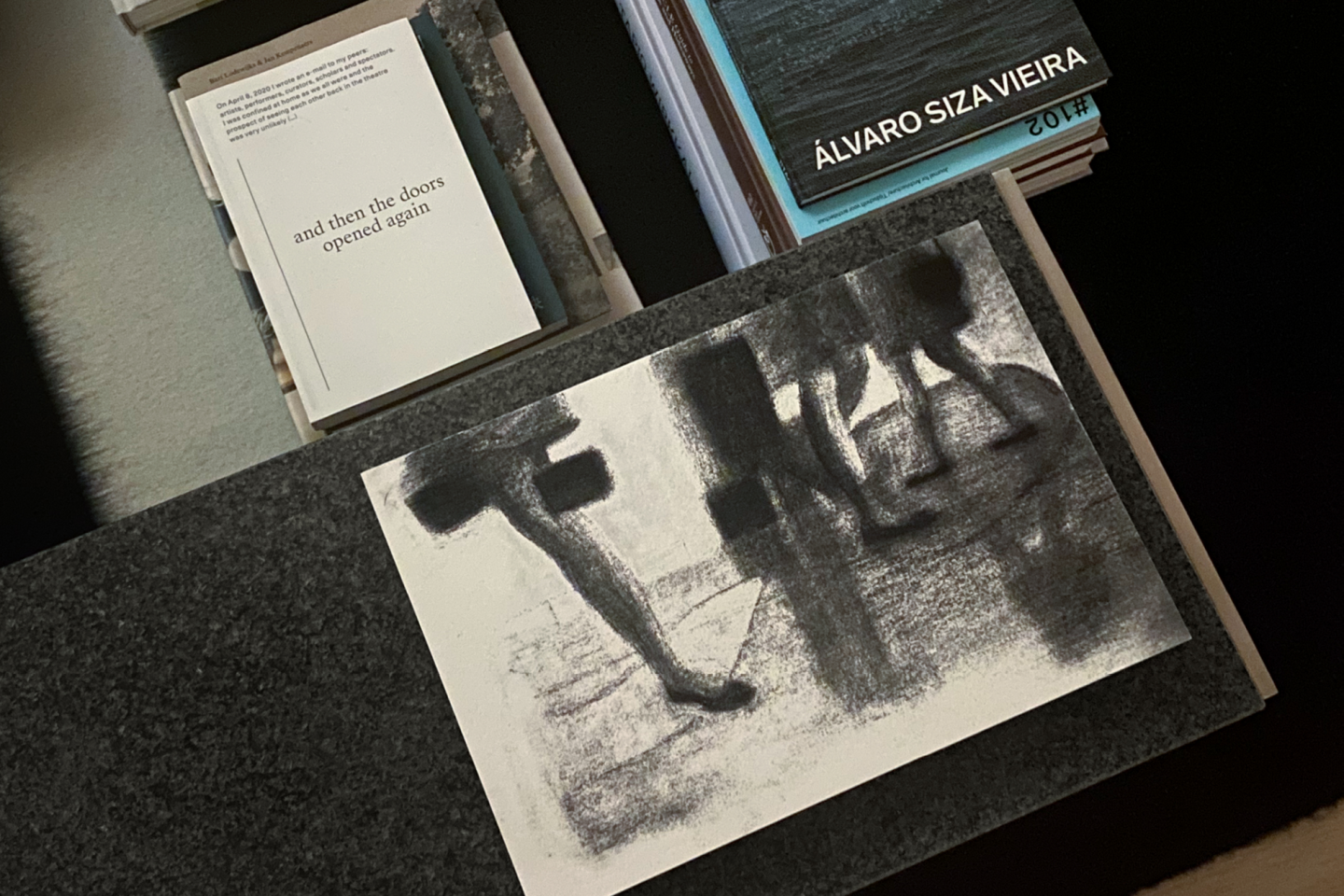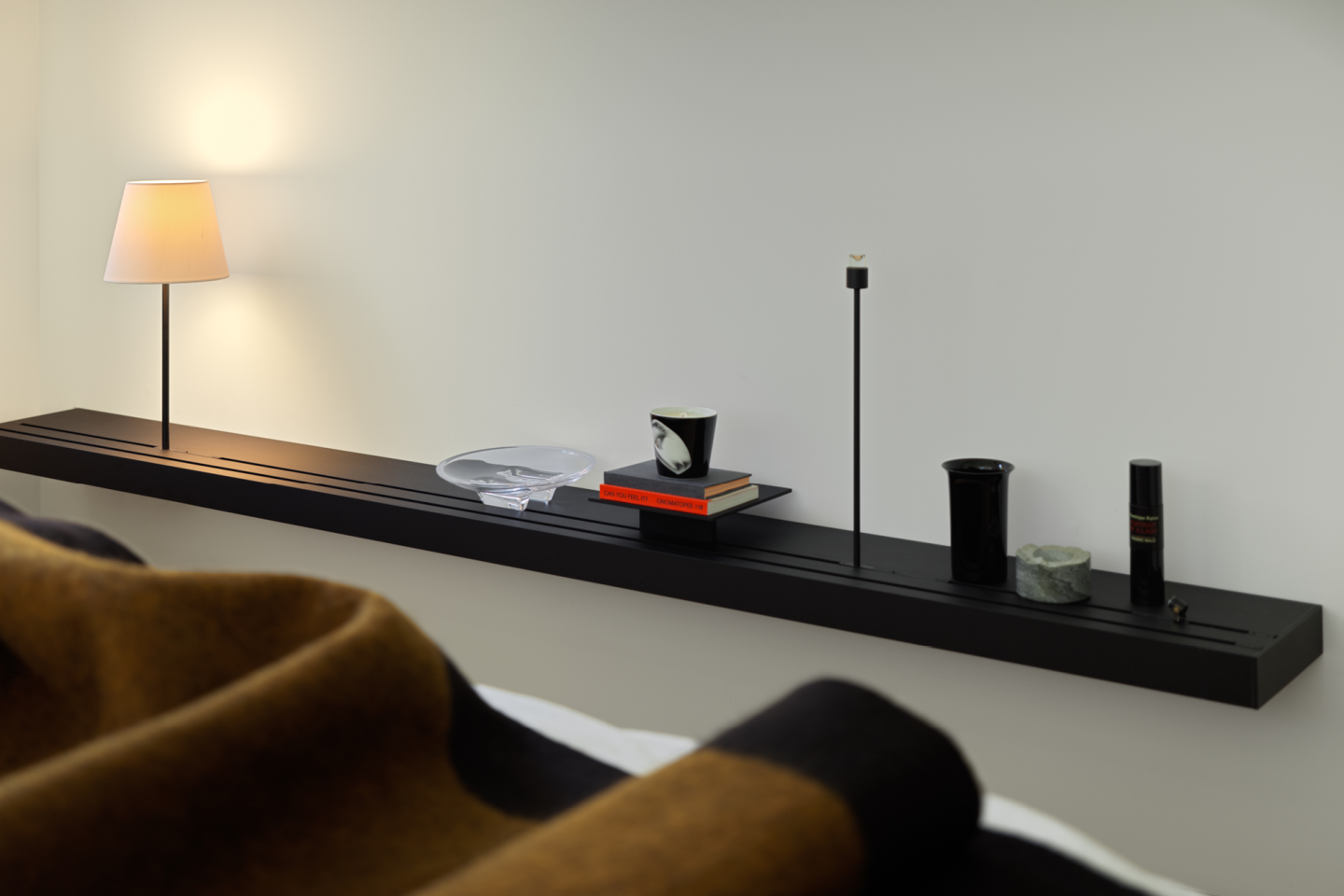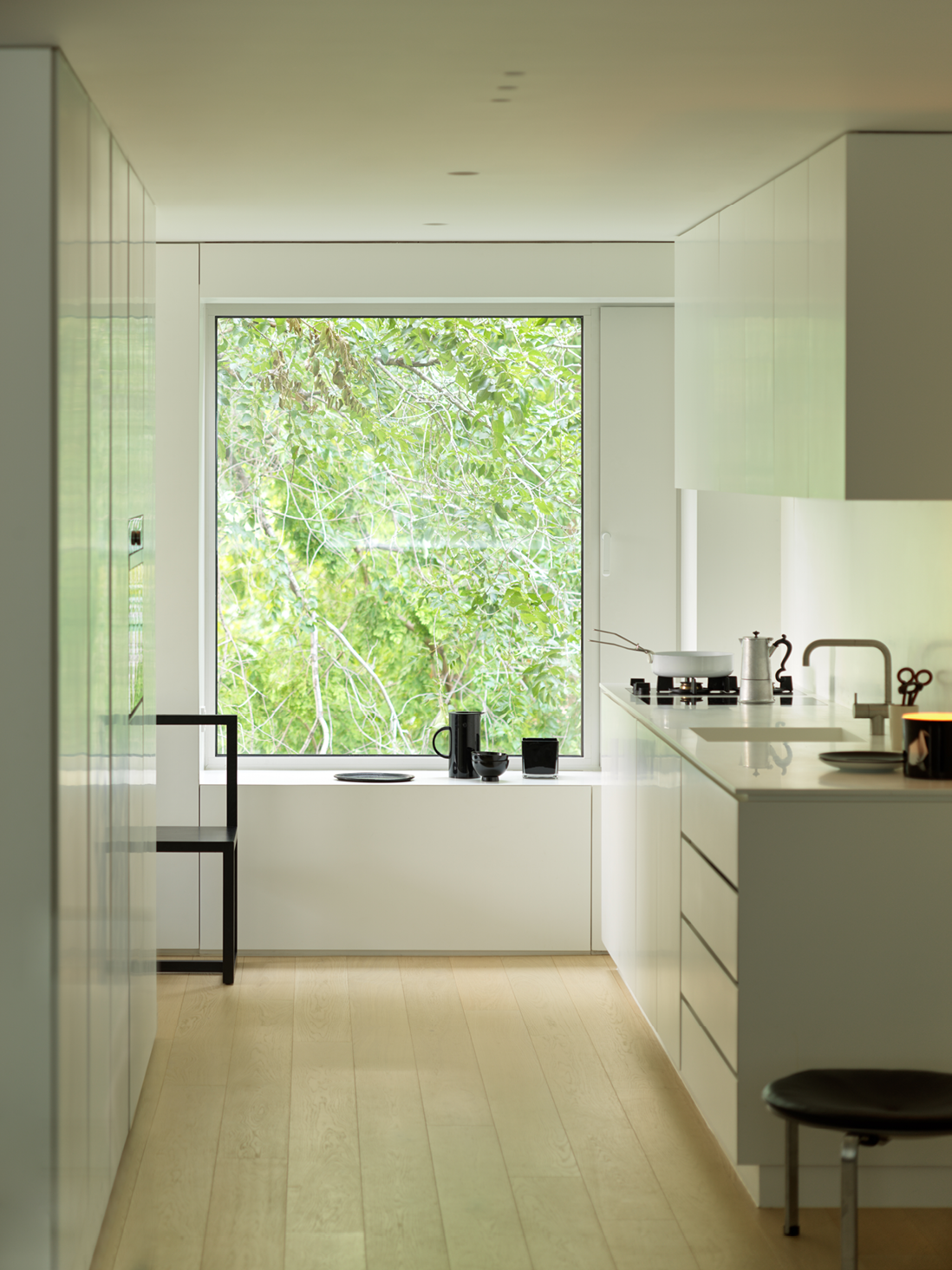The Apartment
Area: 100 sqm
Status: Complete
Completion: February 2020
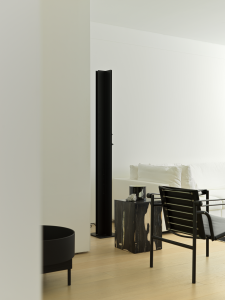
Counting the artworks in Gao Ya and Chen Peng’s house reveals seven pieces: three charcoal sketches by Gao Ya and four windows. We prefer to call them “paintings” rather than “windows” for a reason. Their apartment sits atop an old residential building, surrounded by a lush lilac garden. The top-floor location is advantageous, allowing the occupants to be at tree canopy level, making the framed views from the windows resemble captured paintings.
“The changing seasons and the growth of plants outside create shifting light and shadow textures inside, altering the home’s feel, which adds a subtle sense of time,” Gao Ya explains.
The freedom afforded by this verdant setting was one of the reasons Gao Ya and Chen Peng decided to buy the apartment. Like many old buildings in Shanghai, this was not a naturally perfect house. They bought it just as they were leaving their previous jobs to start their duo studio, ONOAA—two intersecting paths, beginning to run parallel with determination.
Reflecting on ONOAA’s accumulated works over the years, one can see echoes of their home: like the old building’s design, the restructuring of space is the starting premise. They adjusted some absolute partitions to open up the space, maintaining as much airflow as possible in a small area. This is particularly evident in the kitchen and study: the wall that originally separated these spaces was turned into a sliding wall that can be tucked away, providing a flexible solution for changing the space.
“We like spaces that flow; walls exist only when needed,” says Gao Ya. “Sometimes, I want a quiet, enclosed space, but other times, I want to read while chatting with someone cooking.”
Gao Ya and Chen Peng also put much thought into natural lighting. The window connecting the kitchen and study is the broadest in the house. It was designed by Gao Ya and Chen Peng: about 4/5 of it is fixed, with a narrow, ventilated movable window on the side. “We had a special mold made in Germany because no one had done it before,” Chen Peng recalls. “Large windows can obstruct the view with screens, but this design allows us to enjoy the scenery with minimal ventilation.”
This window indeed frames the brightest view in the house: climbing trumpet vines and lush greenery outside. The study window on the other side is completely sealed and set higher, allowing views of the treetops and sky, providing a different perspective. Large transparent glass and window frames seem to freeze the entire landscape, except for occasional birds and swaying branches that break the stillness.
At the other end of the house, the balcony remains semi-open—if windows are like viewable paintings, the balcony is more like a walk-in piece. A giant pine tree and various other trees surround it, with branches poking through. Gao Ya says this is where she and Chen Peng spend most of their time after working in the studio. “That tree is fascinating,” she points out. “It grows little curls that squirrels and birds nibble on, which turn yellow and fall in April, then grow leaves.”
Gao Ya began observing the tree’s growth during the 2020 pandemic, and it has become a habit. She can now recount which flowers bloom first, which branches attract squirrels, and which trees shed in winter and thrive in summer.
Pulling back the balcony curtains connects to the bedroom, which is simply furnished: two small storage trolleys from Swiss Airlines, a basic bed, and a wall-mounted shelf lamp. The Viabizzuno lamp is interesting; it looks like a black shelf with slots for installing small lamps or shelves according to the owner’s preference. “It’s not overly decorative,” says Chen Peng, “but it adds some star-like embellishments.”
A similar adjustable floor lamp is in the living room, usually kept dim to follow the natural light’s rhythm. The living room has a thick black-and-white rug scattered with books, which initially had a coffee table but was removed after two years. “Living here made us realize we didn’t need as much as we initially thought,” says Gao Ya.
An eye-catching side table by the sofa is a wood-grain stone piece with irregular cracks and intertwined blue and wood lines, creating a fascinating texture. Another side table holds a fruit bowl, made of soft-textured sandstone, resembling whole grain bread. This material came from a previous ONOAA project and was brought home by Chen Peng.
Their home contains various materials from past projects. “Sometimes we use our home as a design ‘lab,'” says Chen Peng. “We bring prototype furniture home to understand our designs and materials better.”
These interesting materials also appear in ONOAA’s recent works. Gao Ya and Chen Peng excel in using geometric lines with black, white, gray, and natural wood tones, creating multi-layered and calm spaces with natural materials. Their designs embody restraint and harmony.
Gao Ya and Chen Peng’s home reflects this style: black and white dominate, fused with textured natural materials. On the old building’s framework, they built a solid, reliable space with simple details. “We’ve always adhered to this principle,” says Chen Peng. “We don’t want to create just a shell; we want the space to have its character, which aligns with the brand or owner’s identity.”
A space with its character is easier to manage. Their principle is to use existing, common materials. In a previous project, they used colored felt carpets on each floor and the same material on multi-layered furniture. “Making design understandable is important,” says Chen Peng. “We don’t want to always create complex, custom designs. Many materials are mature now. It’s about finding new uses for them, not reinventing the wheel. If people see familiar materials used differently, it’s effective.”
A shelf by the living room holds Gao Ya’s favorite fragrance products, like MAD et LEN’s iron-can perfumes, which oxidize over time, creating a unique texture. “This iron is like the wrought iron we use in projects, with a rusted feel that evolves,” says Gao Ya. “It’s similar to how spaces change subtly with human use, leaving a mark.”
ONOAA is adept at subtle details. For instance, they used Corian for the study windowsill, matching the wall paint’s color seamlessly, making it easy to clean. This shows in their home’s design: hidden, clean techniques that reveal subtle joys with time, blending naturally.
We mentioned earlier that Gao Ya and Chen Peng’s home has seven paintings: four window views and three charcoal sketches by Gao Ya, done in a London museum. One sketch shows an elderly man’s back viewed from outside, another a girl walking, and the last two people in conversation. These reflect ONOAA’s focus on balancing lines, space, and people: shaping a space, then the possibilities within it.
